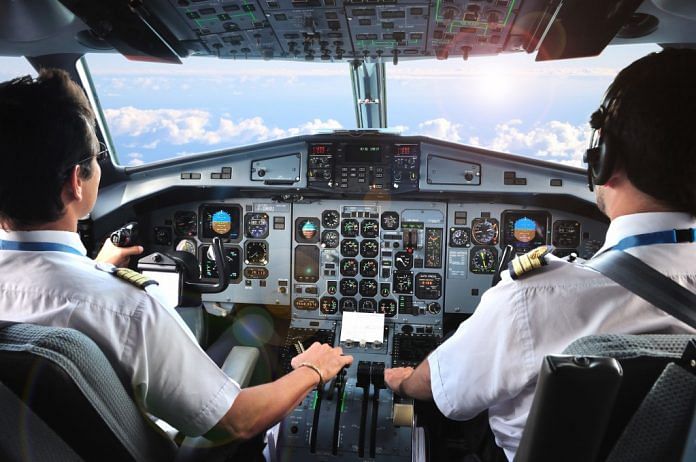New Delhi: In order to address concerns related to fatigue and health issues among pilots and cabin crew, the Directorate General of Civil Aviation (DGCA) has announced significant changes to the rules regarding adequate rest timings for pilots and flight attendants and preventing fatigue-related safety issues.
The changes — announced Monday and which need to be implemented by the airline operators by 1 June, 2024 — include an increase in weekly rest periods for flight crew from 36 hours to 48 hours and amendments to the definition of night duty.
“A bunch of much-awaited reforms in Flight Duty Time Limitations for our pilots has come through,” Minister of Civil Aviation Jyotiraditya M. Scindia said in a post on X, formerly Twitter. “After in-depth analysis of pilot rosters, fatigue-related reports and direct feedback from pilots, we have introduced revised ‘FDTL Regulations’ that include increased rest periods, redefining night duty, and regular fatigue reports to be shared by airlines.”
Flight Duty Time Limitations, or FDTL, are a set of regulations laid down by the DGCA to ensure adequate rest timings for pilots and flight attendants and prevent fatigue-related safety issues. They are mandatory for all airlines.
“These changes — that are very much in line with international best practices — will ensure India has the necessary arsenal, as it prepares to clinch the largest domestic aviation market title in the future,” Scindia added.
The DGCA has also mandated that all airline operators submit quarterly fatigue reports, including the action taken on such reports. These reports will “follow a non-punitive and confidentiality policy,” according to an official statement. The regulator also plans to adopt a new regime of fatigue management called the Fatigue Risk Management System (FRMS) going forward.
“The revised FDTL regulation is a stepping stone towards FRMS implementation in India,” the officials statement said. “FRMS is a data-driven approach to enhance monitoring and reporting of flight crew fatigue.”
The statement pointed out that stringent monitoring, record keeping and reporting would be needed to implement such a system, which would require the collaboration of various aviation stakeholders such as the regulator, airline operators, flight crew, etc.
It also said that the introduction of these reforms in the civil aviation sector would be a substantial step forward in addressing pilot fatigue, enhancing overall flight safety, and balancing it with the projected growth of the aviation sector in India.
Also read: Strike a balance between interests of airlines & passengers, says parliamentary panel report
What makes pilots tired?
The government said that, as a means to prepare the new regulations effectively, the DGCA collected and analysed “extensive numbers” of pilot rosters along with pilot fatigue reports submitted by airline operators.
Based on the analysis of this data, it identified some of the key areas resulting in pilot fatigue, such as maximum flight duty period, night duty, weekly rest periods, and flight duty period extensions.
The government further said that the DGCA had backed this data and the resultant findings with feedback from various stakeholders, including airline operators, pilot associations and individuals.
The worldwide standard for such rules — those put in place by the US Federal Aviation Administration and the European Union Aviation Safety Agency — were also referred to while amending India’s regulations, while keeping in mind the specific operating environment in India.
Changes to night duty
In addition to increasing the mandated weekly rest periods for flight crew, the revised guidelines amend the limit of ‘night duty’ to apply to the period between midnight and 6 am, as against the previous limits of midnight to 5 am.
“This enhancement of one hour during early morning will ensure adequate rest and also align the night duty period which encompasses Window of Circadian Low (WOCL) from 0200-0600 hours i.e. the time during which the circadian body clock cycle is at its lowest in terms of alertness,” the government said.
Additionally, taking into consideration different types of operations across time zones, “the maximum flight time and maximum flight duty period for flight operations encroaching night have been restricted to 8 hours flight time and 10 hours flight duty period, respectively”.
The number of landings during night operations have also been limited to only two landings as compared to a maximum permissible six landings under the previous regulations.
(Edited by Zinnia Ray Chaudhuri)
Also read: Redbird’s grounding not first sign of India’s flight training woes, but has made pilot shortage dire



